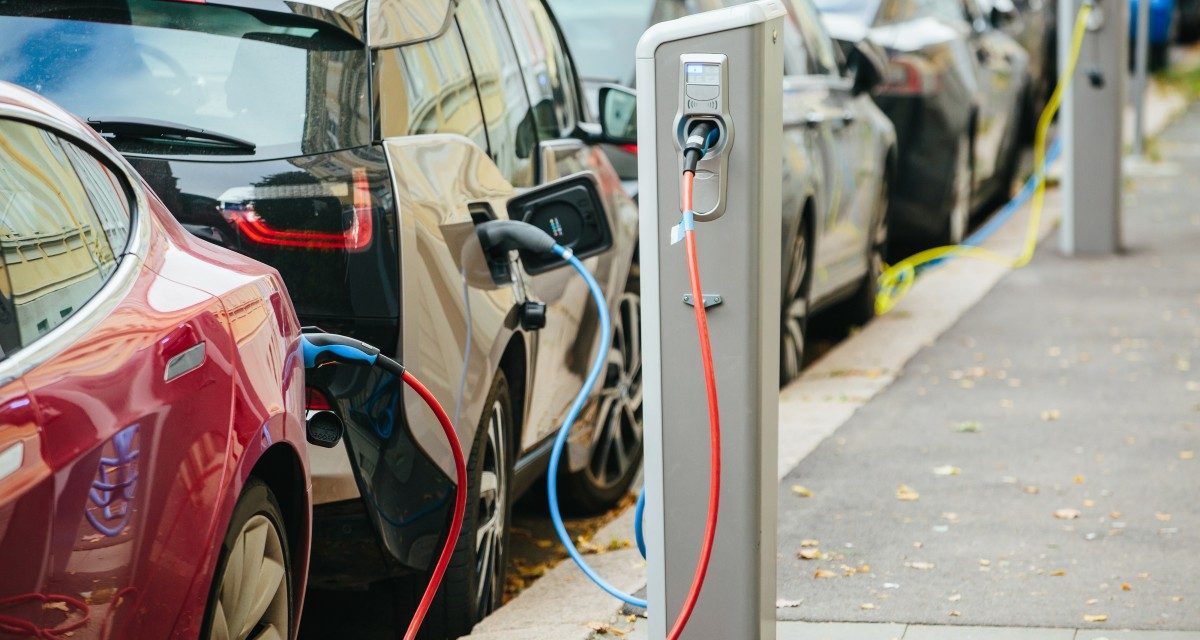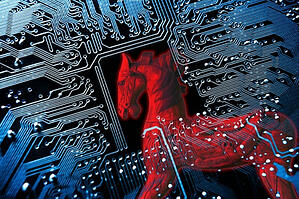Four Predictions for the Future of the EV Charging Industry

Originally posted on Jabil blog
By Michael von Mackensen
Senior Director Global New Business Development, Jabil
The transition from the internal combustion engine (ICE) to electric powertrains reached a tipping point in 2019, fueled by more stringent emissions regulations, access restrictions in cities, advancing EV technologies that lengthen driving ranges and cut prices and the expansion of the charging network. As we move toward an electrified future, here are four predictions for the future of EV charging solutions:
1. Different Types of Electric Vehicle Chargers Will Require Different Strategies
In the late 19th century, three brilliant inventors – Thomas Edison, George Westinghouse and Nikola Tesla – were locked in a fierce battle over the future of electricity.
During the “War of the Currents,” Edison espoused the belief that direct current (DC) energy would come to power the world while Westinghouse and Tesla believed alternating current (AC) was the future. Although AC eventually became dominant in the electric power industry, the issue isn’t quite so clean-cut when it comes to EV charging. In this market, both AC and DC are used, but for different reasons, and consequently they require different competitive strategies.
AC Electric Car Charging: Steady Charge
Most chargers available to current EV owners – i.e., Level 1 and Level 2 EV chargers – are AC chargers, which are typically used for top-up charging. They should ideally be placed at home, work and other end-destinations, because vehicles require more loading time with these solutions. These are the small systems that are either in the car as cables or installed in garages as wall boxes.
These chargers will soon be commodities. Because there is more demand for AC chargers, players in this space should work on safeguarding their solutions by evaluating their supply chain management practices and processes. For instance, they should focus on their differentiation, consider investing in predictive analytics, explore regionalized production options and find alternative suppliers for components that are difficult to obtain.
DC Electric Car Charging: Rapid Charge
The power that comes from the grid is always AC. However, batteries, like the one in your EV, can only store power as DC, which is why most electronic devices have a converter built into the plug. Every time you’re charging a device such as your smartphone, the plug converts AC power to DC.
DC charging is much faster than AC; these Level 3 charging stations are typically used for en-route rapid charging, such as highways and gas stations. These are typically more complex, both in terms of technology and the ecosystem. Because of this, they will garner a higher price point than AC chargers.
Substantial competition in the DC electric vehicle charging space is still in the future. Right now, companies should work on setting themselves up for large-scale volume production and focus their effort on areas where they can really differentiate in the market and add value.
2. A Public EV Charging Infrastructure Will Pave the Way to Widespread EV Adoption
There are substantial challenges in establishing a public charging infrastructure. First, none of the companies in the EV charging industry have figured out how to make a profit. The time and cost required to install a grid-connected charging station can be significant, often involving construction permits and hooking up to the local utility.
“It’s definitely going to require years of investment before they get any return,” Chris Nelder, who has studied the economics of charging for the RMI energy research institute, said in an April 2021 Bloomberg article.
In addition to the high cost of installation, there is little demand for a public charging infrastructure because most people charge at home. However, there is a mental factor to establishing a charging infrastructure. Many people will not be comfortable going full electric until public charging is available.
People who are used to driving essentially an unlimited distance are reassured by a widely available EV charging infrastructure as they change from combustion engines to EVs. In fact, it may be key in encouraging mass electric vehicle adoption.
Right now, there’s a focus on establishing an EV charging infrastructure so that public EV charging stations are as widely available as gas stations. In a joint letter, the European Automobile Manufacturers’ Association (ACEA), European Consumer Organisation (BEUC) and Transport and Environment (TE) have advised the European Union to set binding targets for 1 million public charging points for electric vehicles by 2024, and 3 million by 2029, to give consumers the confidence to switch to the new technology. This will require a significant increase in investment as there were less than a quarter of a million public EV chargers in Europe in 2020.
As previously noted, DC chargers are ideal for this purpose. With DC-enabled rapid charging, you can charge for only 10 minutes but still have 300-400 kilometers of driving distance.
European governments are already taking action to improve and expand the current EV public charging infrastructure; Germany has agreed is aiming for 1,000 fast-charging (DC) stations alongside motorways by the end of 2023. This points to near-term escalation of demand for DC charging stations. EV companies can best meet these demands by outsourcing to a manufacturing partner.
3. Outsourcing Will Be Key to Staying Competitive
One challenge that EV charging manufacturers face in developing an infrastructure is that the production volume is still limited. Based on market research and conversations with key players, I would estimate the overall DC market outside China is probably just 20,000 of these systems per year (although it will likely double this year). The market is very fragmented, and for the single EV charging hardware supplier, it is difficult to reach a critical mass with competitive material cost and a sophisticated manufacturing solution with the right balance between flexibility and automation.
The right service partner can help, especially by (a) improving time-to-market through collaboration in design and engineering and (b) by applying cost-competitive and scalable solutions based on solid manufacturing expert knowledge, but unfortunately, in this still-emerging market, many players are hesitant to outsource. OEMs should take five considerations into account when manufacturing power and charging technology, which two of my colleagues explain in their article, Manufacturing New Power and Charging Technology.
We saw how devastating it can be for companies to keep everything in-house about 15 years ago. In my homeland, Germany, the solar market started gaining traction because the government implemented policies to encourage alternative energy development. Small start-ups with big ambitions began appearing on the solar energy scene, supplying critical components like solar modules and solar inverters.
Several regional solar inverter companies bootstrapped their businesses, learning processes like how to do surface-mount technology (SMT) electronics assembly, build-up and manage an electronics supply chain as well as produce and continuously improve the hardware. As we say in Germany, they were “cooking in their own soup,” which worked…for a while. But these players were challenged by rapidly increasing competition and their need to grow and establish a solid reputation in their industry. Ultimately, they made costly mistakes, which proved to be their downfall. Less than a handful of companies survived; the rest were forced to go out of business.
In the young, low-margin business of the EV charging industry, we see many players tend to make the same mistake. By trying to keep all aspects of EV charger manufacturing in-house, companies are struggling to innovate the product, scale production and keep costs low. This is where an engineering and manufacturing partner like Jabil can make a dramatic difference.
We saw firsthand how a manufacturing partner can help an EV charging company effectively scale production when we started working with EVBox, a leading global EV charging solutions provider.
When EVBox sought to ramp up production to 10,000 units per month, and ultimately more than 200,000 units each year, they quickly realized that assistance from a global manufacturing partner was essential. The company needed a more agile and responsive supply chain to address surges in demand without experiencing component shortages. Additionally, more effective risk mitigation was required to protect against market disruptions that could impact product prices and lead times.
Logistically, it had to ensure direct shipments of high-volume, quality products while adhering to the International Automotive Task Force (IATF) standard for automotive quality management. By pooling our resources and expertise, we were able to slash time-to-market by more than 50% while meeting EVBox’s need to produce 10,000 units per month.
4. The Pandemic Won’t Stop the Future of the EV Charging Industry
When we look to the future, it’s impossible to not think about the effects of the pandemic. The transformation from combustion engines to EV is a long-term transformation, so it’s unstoppable by the pandemic. In fact, global sales of electric cars accelerated fast in 2020, rising by 43% to more than 3 million, despite overall car sales slumping by a fifth during the pandemic, per The Guardian. However, COVID-19 has changed the way people live and work…and so, of course, it will change the way we drive.
Before the pandemic, 17% of U.S. employees worked from home five days or more per week; this increased to 44% during the pandemic, according to Statista. Similarly, only about 10% of EU employees worked from home pre-pandemic; this rose to about 50%. The outbreak of COVID-19 accelerated the remote working trend, as quarantines and lockdowns made commuting and working in an office close to impossible for millions around the world. Working from home provided a solution, with employees performing their roles away from the office supported by specialized technology, eliminating the commute to an office to remain connected with colleagues and clients.
Although office buildings and workspaces are beginning to reopen as vaccinations become more and more available to the public, the fact that many people have been working remotely for a year (more or less) will likely affect where they will need to charge their vehicles. If they charge at home where they have 10 hours overnight for the car to recharge, a small AC charger is sufficient.
Contrary to the vision cast by 80s science-fiction, we are not dashing about in airplane-car hybrids and (sadly) will not any time soon. But the car of the future is quickly arriving, and the EV charging industry is at the forefront of this change. Before we know it, electricity will power everything from our commute to work to family road trips to grocery store runs. But as we gear up for a battery-fueled future, companies need to strategically think about how to charge the vehicles that will empower our world.












